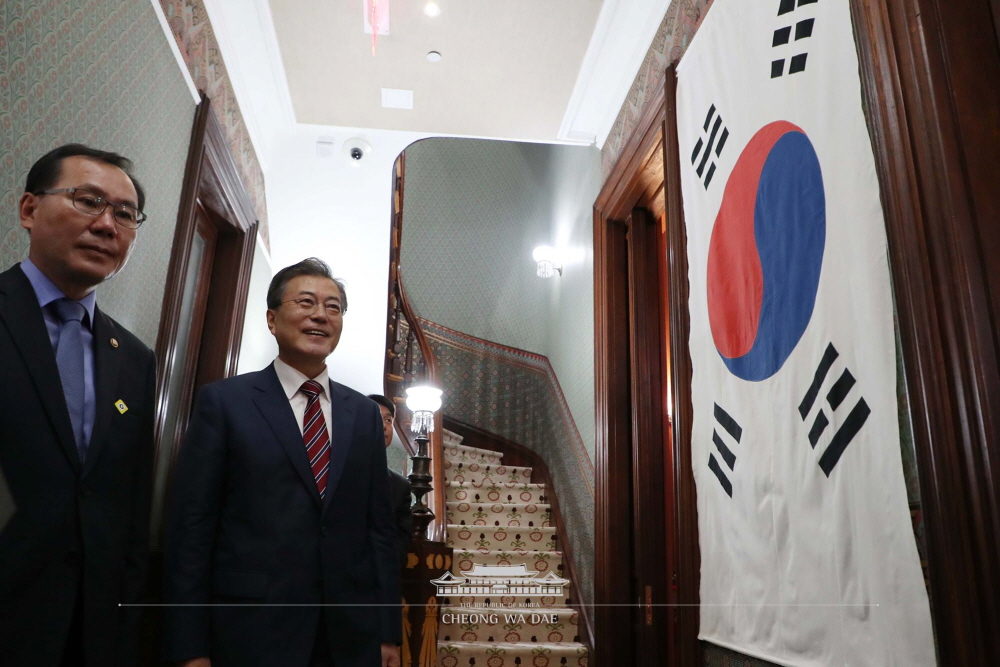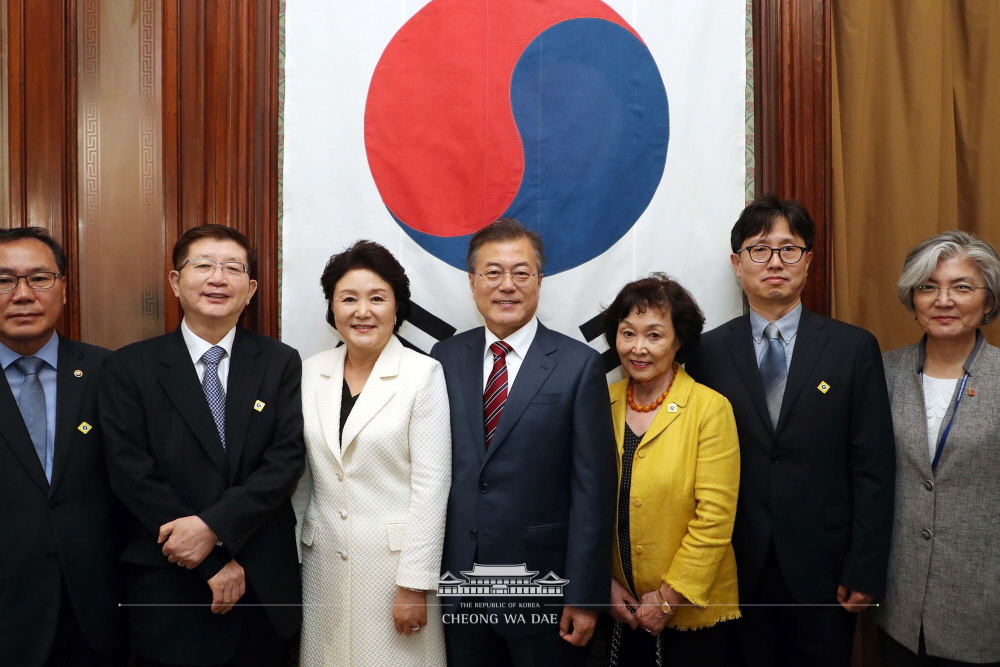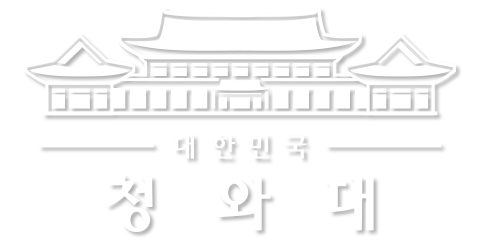이 웹사이트는 제19대 대통령 임기 종료에 따라 대통령기록관이 「대통령기록물 관리에 관한 법률」에 의해 이관받아 서비스하는 대통령기록물입니다. 자료의 열람만 가능하며 수정 · 추가 · 삭제는 불가능합니다.
다만, 「개인정보보호법」에 의하여 개인의 정보를 보호받기 원하시는 분은 관련 내용(요청자, 요청내용, 연락처, 글위치)을 대통령 웹기록물 담당자(044-211-2253)에게 요청해 주시면 신속히 검토하여 조치해 드리겠습니다. 감사합니다.
MEDIA

By Kang Gahui and Sohn JiAe
Photos = Cheong Wa Dae
President Moon Jae-in and first lady Kim Jung-sook paid a visit to what used to be the Joseon-era legation building during the Korean Empire, as part of their itinerary in the U.S. on May 22.
The former legation building, built in 1889, was Korea's first overseas diplomatic building. It’s been credited for symbolizing the diplomatic philosophy of King Gojong, emphasizing both independence and strength. Gojong was the first ruler of the Korean Empire and endeavored to bring order to Northeast Asia and to open up a larger, world-focused diplomatic horizon for Korea.
After the forced 1905 Protectorate Treaty between Korea and Japan, however, known as the Eulsa Treaty, Joseon was deprived of any diplomatic sovereignty and all legation activities stopped. In 2012, however, the Cultural Heritage Administration purchased the building and started reconstruction. The building finally reopened on the day of President Moon’s visit.
President Moon said in his congratulatory speech during the re-opening ceremony that, “In the history of Korea-U.S. relations, the 1882 Korea-U.S. Treaty of Peace, Amity, Commerce and Navigation was the first treaty that our country signed independently. It’s quite significant that the two countries have maintained the relationship over the past 136 years based on efforts of independent diplomacy.”
President Moon and the first lady had a tour around the building, along with Park Hye-seon, granddaughter of the first minister plenipotentiary Park Jeong-yang, Lee Sang-goo and Jang Han-seong, great-grandchildren of legation officials Yi Sang-jae and Jang Bong-hwan.
After the tour, the president wrote in the guest book that, “This is a symbol of independent diplomacy and of Korea-U.S. friendship. This is proud history that should be remembered.”




